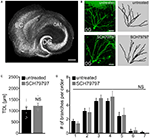


5, 12 - 14 A 2022 study 12 by a multinational collaboration did not reveal an association between low Apgar scores and severe neurologic injury, defined as grade 3 or 4 intraventricular hemorrhage (IVH) or cystic periventricular leukomalacia (CPVL), in infants born extremely preterm (EPT ie, those born at less than 28 weeks’ gestation).

2 - 11Ī similar association of low 5-minute Apgar scores after birth and increased risks of mortality and cerebral palsy (CP) was observed in infants born preterm, although the strength of the association decreased at lower gestational ages. Nonetheless, the Apgar score remains the most commonly used assessment tool, and low Apgar scores at 5 minutes after birth are uniformly associated with an increased risk of mortality, acute morbidities, impaired neurodevelopmental outcomes, and educational support services in infants born at term. 2 - 4 After the Apgar score’s original description, advances in medical care have dramatically improved neonatal outcomes. 1 Although it was not the developer’s intention to predict neurodevelopmental outcomes, Apgar scores at 5 and 10 minutes of life were later found to be associated with mortality and acute morbidities in infants born at term. The Apgar score was originally developed by Virginia Apgar in 1953 for the standardized evaluation of the newborn infant’s clinical condition at 1 minute after birth and the need for resuscitation measures. This finding may be associated with high interobserver variability in Apgar scoring, reduced vitality signs and poorer responses to resuscitation after birth among infants born EPT, and the association of more deleterious exposures in the neonatal intensive care unit or of socioeconomic factors with greater changes in outcomes during the first 5 years of life. Congruent results for Apgar scores of 3 or less were obtained for motor function scores for all children (β = −4.0 95% CI, −20.1 to 12.1) and excluding children with a diagnosis of cerebral palsy (β = 0.8, 95% CI −11.7 to 13.3).Ĭonclusions and Relevance This study found that low Apgar scores were not associated with longer-term outcomes in infants born EPT. After adjusting for sociodemographic variables, perinatal factors, and severe neonatal morbidities, there was no association of Apgar score with IQ, even for scores of 3 or less (β = −3.3 95% CI, −10.5 to 3.8) compared with the score 9 to 10 category. Results From the total cohort of 4395 infants born EPT, 2522 infants were live born, 1654 infants survived to age 5 years, and 996 infants (478 females ) followed up had at least 1 of 3 outcome measures. All outcomes were measured as continuous variables. Parents additionally provided information on communication and problem-solving skills using the Ages and Stages Questionnaire, third edition (ASQ-3). Main Outcomes and Measures Cognitive and motor outcomes were assessed using the Wechsler Preschool and Primary Scale of Intelligence test of IQ derived from locally normed versions by country and the Movement Assessment Battery for Children–Second Edition. Clinical assessments of cognition and motor function at age 5 years were performed in infants born EPT and analyzed in January to July 2023.Įxposures Apgar score at 5 minutes of life categorized into 4 groups (0-3, 4-6, 7-8, and 9-10 points). Objective To investigate the association between the Apgar score and neurodevelopmental outcomes in infants born EPT.ĭesign, Setting, and Participants This cohort study was conducted using data from the Effective Perinatal Intensive Care in Europe-Screening to Improve Health in Very Preterm Infants in Europe (EPICE-SHIPS) study, a population-based cohort in 19 regions of 11 European countries in 2011 to 2012. Its applicability to estimate neurodevelopmental outcomes in infants born extremely preterm (EPT <28 weeks’ gestation) is not well established. Importance The Apgar score is used worldwide as an assessment tool to estimate the vitality of newborns in their first minutes of life.

Shared Decision Making and Communication.Scientific Discovery and the Future of Medicine.Health Care Economics, Insurance, Payment.Clinical Implications of Basic Neuroscience.Challenges in Clinical Electrocardiography.


 0 kommentar(er)
0 kommentar(er)
